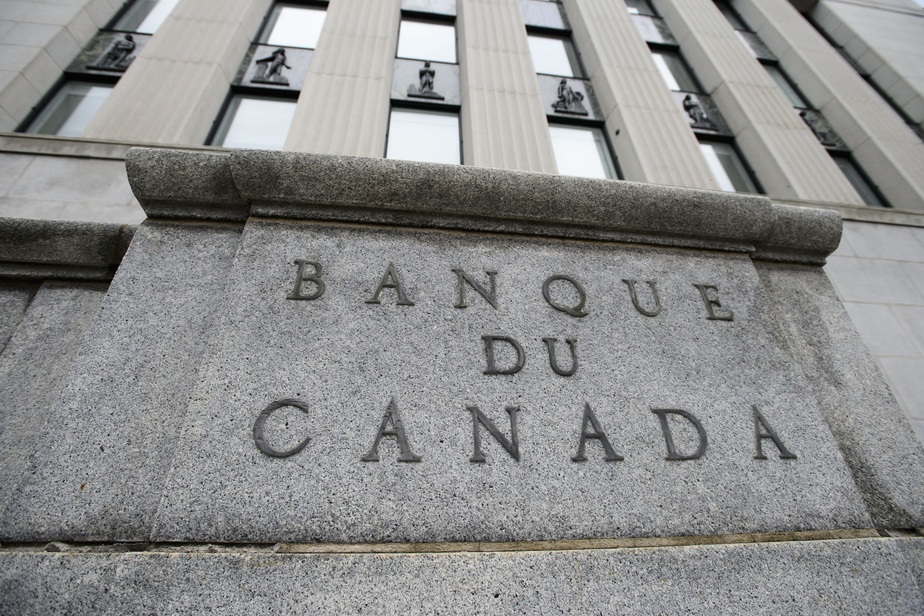The Bank of Canada has returned to the barricades with a satchel of new weapons to fight the economic fallout from COVID-19.
Policy-makers left the benchmark lending rate unchanged at 0.25 per cent, but unveiled new programs that will see the central bank purchase tens of billions of dollars’ worth of provincial bonds and corporate debt, representing a further push into quantitative easing, or QE.
“The next challenge for markets will be managing increased demand for near-term financing by federal and provincial governments, and businesses and households,” the Bank of Canada said in a new policy statement April 15. “The situation calls for special actions by the central bank.”
- Bank of Canada maintains interest rate: Read the official statement
- Bank of Canada set for bigger buying spree — here’s where the billions might go
- Statistics Canada for first time ever releases GDP data early — and it's the worst on record
The new operations will expose the central bank to tricky political considerations, since provincial and corporate leaders could see the Bank of Canada’s support efforts as an opportunity to delay difficult decisions. But the gravity of the situation outweighs concerns about moral hazards, at least for now. The Bank of Canada in its latest quarterly economic report said Canada likely is facing its most severe recession ever.
Policy-makers already have set up a half-dozen emergency programs aimed at pushing cash into financial markets, including the weekly purchase of at least $5 billion of federal government bonds. In the “coming weeks,” the central bank announced it also will start buying up to $50 billion in provincial debt, and up to $10 billion of investment-grade corporate bonds. Both will be firsts for the Bank of Canada.

“The Canadian economy was in a solid position ahead of the COVID-19 outbreak, but has since been hit by widespread shutdowns and lower oil prices,” the central bank said. “The bank’s Governing Council stands ready to adjust the scale or duration of its programs if necessary.”
Policymakers added: “All the bank’s actions are aimed at helping to bridge the current period of containment and create the conditions for a sustainable recovery and achievement of the inflation target over time.”
The Bank of Canada decided there was little to be gained from joining the weekly scramble to produce increasingly apocalyptic economic forecasts, noting that the uncertainty around any outlook at the moment is “exceptionally high.”
Predictions about economic growth are based on previous trends and there’s no way to know if those have anything to say about a once-in-a-lifetime event such as the global spread of the coronavirus that causes COVID-19. The central bank is comfortable predicting a recovery, but the “timing and strength” will “depend heavily” on how the pandemic unfolds and how businesses and households respond.
“None of these can be forecast with any degree of confidence,” the Bank of Canada said in its latest quarterly economic report, released April 15.
That impossible degree of difficulty hasn’t stopped other forecasters from trying, of course.
The International Monetary Fund this week said the “Great Lockdown” will cause global GDP to contract by three per cent this year, the deepest since the Great Depression, followed by growth of 5.8 per cent in 2021. The fund predicts Canada’s economy will collapse by 6.2 per cent this year, roughly the average of advanced economies, followed by growth of 4.2 per cent next year.
The Bank of Canada would probably have come up with something similar if it had tried. Instead, policy-makers presented a “scenario analysis” that offers a range of plausible outcomes. None are great in the short term. The central bank said GDP will be about one to three per cent lower in the first quarter than the fourth quarter, and between 15 and 30 per cent lower in the second quarter than at the end of 2019.
“Despite a high level of uncertainty, these estimates suggest that the near-term downturn will be the sharpest on record,” the Bank of Canada said.
That’s the price governments knew they would have to pay to slow the spread of the virus. The unknown is whether the economy will be the same once officials turn it back on.
Canada’s central bank said it’s possible that the hundreds of billions of dollars that governments and central bankers have pushed into their economies will allow things to get back to normal fairly quickly.
That would require containment efforts around the world to be relaxed soon. If that happens, global demand could recover relatively quickly, and supply chains would reconnect in “short order.” Consumer and business confidence would bounce back, providing an additional boost to growth.
The Bank of Canada noted that many of the industries that have suffered the most from the lockdown, including accommodation and food, tend to have high job turnover, suggesting they will be able to resume operations without much delay.
“In this less severe and less persistent scenario, the decline in economic activity is abrupt and deep but relatively short-lived,” the bank said. “The recession would be rapidly followed by a strong rebound in activity, particularly if the price of oil also bounced back quickly, in line with foreign demand.”
Unfortunately, there is an equally plausible scenario in which the recession changes the nature of the economy, resulting in sluggish growth for a considerable period of time. The impact of the pandemic and the collapse of energy prices could shrink Canada’s capacity to generate goods and services without stoking inflation, putting a lower ceiling on economic output. Companies could go bankrupt and not come back, or employers could decide to carry on with reduced staff, increasing unemployment.
“Together, these effects could cause structural damage to the economy that might not be undone for several years, if ever,” the Bank of Canada said. “Under this second scenario, future growth would be severely dampened, with economic activity remaining below its pre-pandemic level for an extended period.”
























